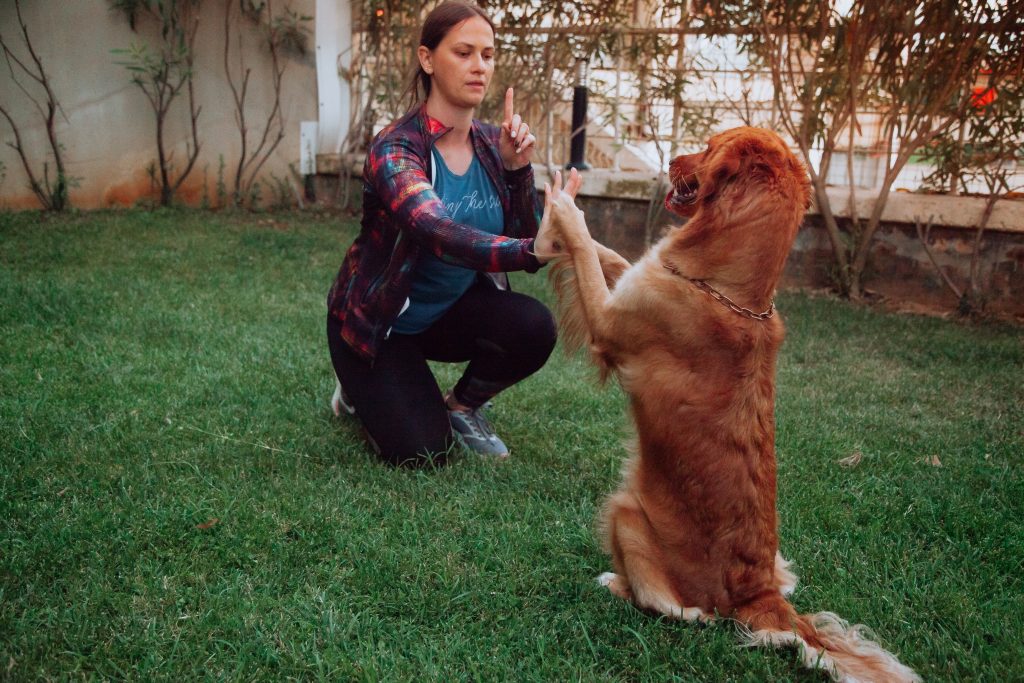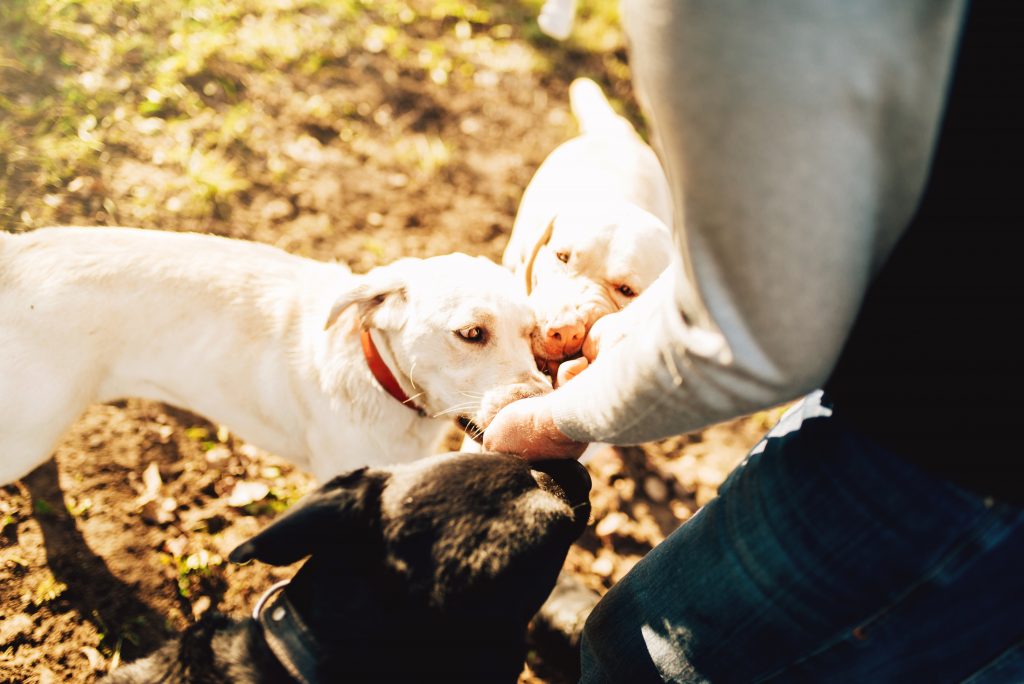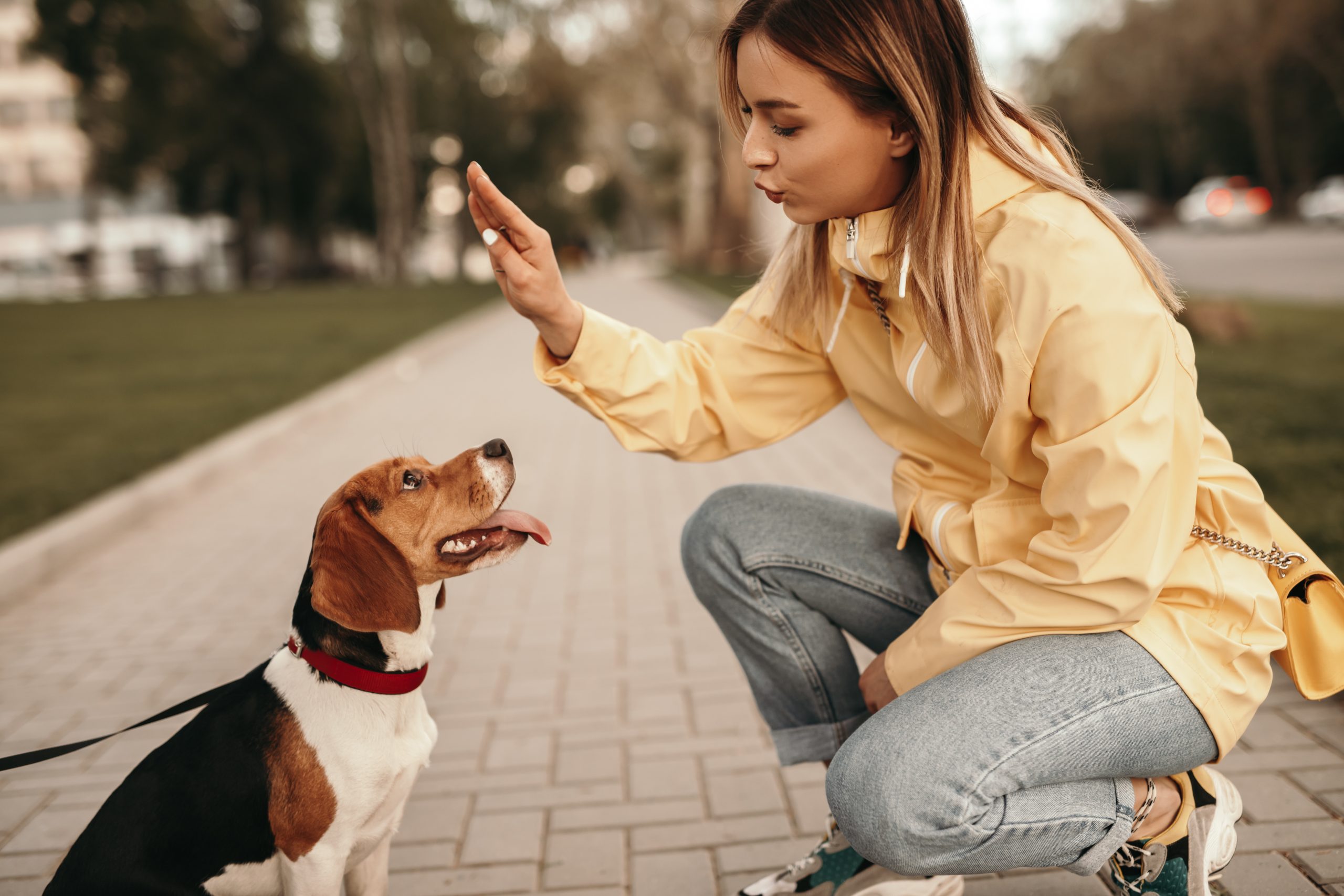Dog training is an essential part of every puppy owner’s journey. It not only ensures the well-being of the pup, but also ensures a stronger bond between the owner and their furry companion. When done right, training can help promote loyalty and trust, and turn your adorable puppy into a well-behaved dog. In this article, we will explore the importance of starting early, the most effective techniques for training, the role of the right rewards and consistency, and how you can make training a fun experience for both you and your pup. So if you’re a puppy owner looking for the best ways to train your furry friend, this article is for you. Let’s dive in!
1. Use Positive Reinforcement Techniques
Dogs are wonderful companions that bring joy and happiness to our lives. However, they require proper training to become well-behaved members of society. Positive reinforcement techniques can be an effective method for teaching good behavior to your furry friend.
Positive reinforcement training is a reward-based training method that encourages good behavior through positive feedback. This technique involves giving your dog food treats or verbal praise when they exhibit a desired behavior. This helps your dog associate the behavior with a positive outcome and encourages them to repeat it in the future.
Unlike negative reinforcement or punishment-based training methods, positive reinforcement training does not involve inflicting pain or discomfort on your dog. Instead, it creates a positive and fun experience that motivates your dog to learn and engage in the training process willingly.
Consistency is key to ensure success with positive reinforcement training. Using high-value rewards that your dog finds desirable, such as their favorite food or toy, will motivate them to learn and participate in the training process. Additionally, breaking down the training sessions into shorter periods of time and conducting them on a regular basis can help improve your dog’s attention and retention of the training material.
Positive reinforcement training can be applied to different areas of dog training, such as teaching basic commands, addressing unwanted behaviors, and improving obedience. It is particularly effective in addressing undesired behaviors, as it allows you to redirect your dog’s attention and reward them for exhibiting good behavior instead.
To use positive reinforcement training effectively, timing is crucial. Rewards must be given immediately after your dog exhibits the desired behavior, as this helps your dog understand which behavior is being rewarded. Using a happy and excited vocal tone can also encourage your dog and make the training process a positive experience.

2. Find the Right Reward
When it comes to dog training, using the right reward can make all the difference. The reward serves as a motivator for your furry friend and helps them understand which behaviors are desired. However, not all dogs respond to the same type of reward. Some dogs may prefer food treats, while others may respond better to a toy or affection.
It is important to figure out what reward works best for your dog. If your dog is food motivated, then using a small piece of food as a treat can be very effective. It is important to use a piece of food that can be consumed quickly so that training can continue. A very small, soft piece of food can be ideal for training purposes.
There are different types of rewards that can be used for dog training such as food treats, praise, petting, or a favorite toy or game. Each reward works differently for different dogs. For example, some dogs may find a toy or game to be a better reward than food treats. Others may respond better to affection and may be more motivated by praise and petting.
High-value rewards can be especially effective as they provide maximum motivation for your dog. High-value rewards are rewards that are particularly desirable to your dog, such as their favorite type of food or toy. Using a high-value reward during training can help motivate your dog to learn and engage in the training process.
3. Consistency is Key
When it comes to dog training, consistency is key. Dogs thrive on routine and repetition, and training is no exception. Consistency not only means using the same cues for everyone in the household but also rewarding desired behavior consistently while never rewarding undesired behavior. Here are some tips on how to achieve consistency in dog training.
Post a List of Cues
A good tip is to post a list of cues in the house where everyone can become familiar with them. This way, every member of the household knows what cues to use and what they mean. Clear and consistent hand signals and verbal cues should be used to give commands for a specific action. This consistency will make it easier for your dog to learn what is expected of them.
Teaching Desired Behaviors vs. Avoiding Undesired Behaviors
It’s essential to teach your dog the desired behaviors that you want to see. To avoid undesired behaviors, it is important to be consistent with training goals. This requires all family members to use the same cues for the same action and discourage contradicting cues that can confuse the dog.
Rewards
Consistency is also critical when it comes to rewards. Make sure that you reward your dog every time they behave correctly, and not just when it is convenient. Consistency in rewarding good behavior and never reinforcing bad behavior will help your dog understand what is expected of them and what behavior is acceptable.
4. Make it Fun
Dog training doesn’t have to be a chore. In fact, it should be a fun and engaging experience for both you and your pup. Whether you’re working on basic obedience or teaching your dog new tricks, keeping training sessions enjoyable is key. When training is fun, your dog is more likely to be engaged and excited about learning.
One way to make training sessions fun is to incorporate playtime into the routine. Playing fetch with instructions, such as “sit” or “drop it,” can be a great way to practice basic obedience skills while still having fun. You can even try playing hide and seek with your dog, using their favorite toys or treats to encourage them to find you. These types of games not only provide mental and physical stimulation for your dog but also offer an opportunity to practice training commands in a playful way.
Including training commands in your daily routines, such as during meal times or walks, can also make training more fun. For example, you can have your dog “stay” before giving them their food or use a “heel” command during walks to reinforce good leash behavior. This helps to integrate training into your everyday life, making it a seamless and fun experience.
It’s important to remember to praise your dog for any progress they make, no matter how minor it may seem. Positive reinforcement is a key aspect of effective training and can make your dog feel confident and encouraged. Harsh criticism or rough games can be damaging to the relationship between you and your dog, so it’s best to avoid these types of interactions.
5. Get a Dog Trainer or Attend a Training Class
When it comes to effective dog training, seeking the help of a professional trainer can be a game-changer. Attending a dog training class or hiring a reputable trainer who exclusively uses positive reinforcement techniques can have several benefits for both you and your pup.
First and foremost, a trainer can assess your dog’s specific needs and behaviors and tailor a training plan to address them. They can also provide you with the guidance and expertise necessary to train your dog effectively and safely.
A dog training class offers the added benefit of socialization for your pup. This can help them develop crucial social skills and minimize behavioral issues like aggression towards other dogs or people.
Crate training is another essential component of dog training. It aids in housebreaking your pup and preventing destructive behavior while you’re away. With consistent crate training, your dog can learn to associate their crate with safety and comfort.
High-value treats are an excellent way to reinforce good behavior during training sessions. These treats, which are especially delicious to your dog, help create a positive association with good behavior and encourage them to repeat it.
Lastly, basic commands like “sit,” “stay,” and “come” are vital to establishing good manners and positive behaviors in your dog. By practicing these commands regularly, you can reinforce good behavior and minimize undesirable ones.

Conclusion
In conclusion, using positive reinforcement techniques for dog training is essential for ensuring a well-behaved and happy pup. Consistency is key when reinforcing good behavior, and making training sessions fun for your dog can encourage them to learn and behave positively. Using high-value treats during training can be an effective reward-based method. For more complex training needs or behavioral issues, hiring a professional dog trainer or attending training classes can provide guidance and tailored techniques for your specific dog’s needs. Ultimately, consistent and positive training can lead to a happy and well-behaved canine companion.

